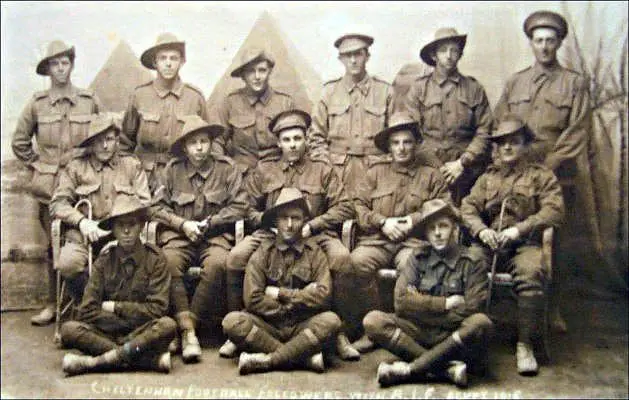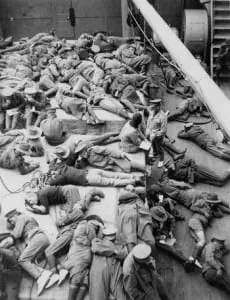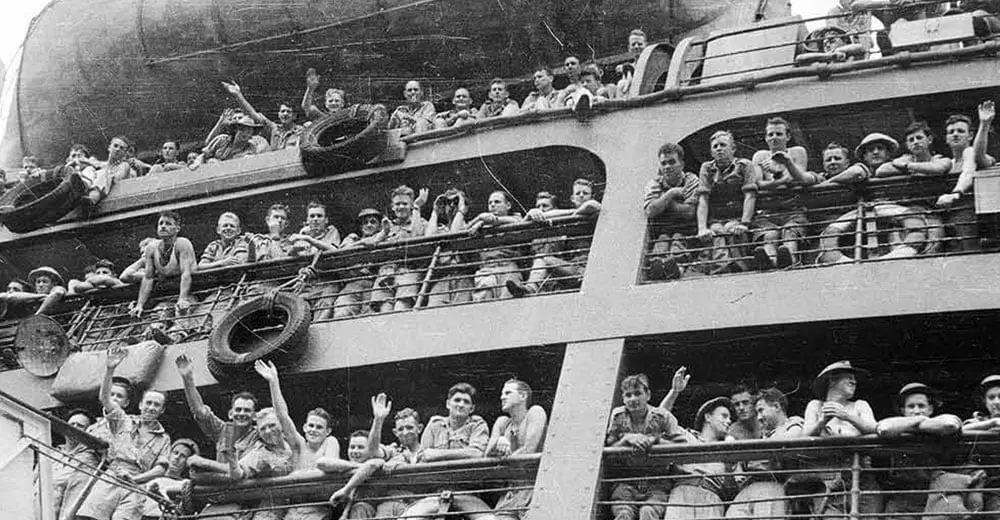To pay homage to our Aussie war veterans, we thought we’d do a little something different on KarryOn and delve into how our troops made their way to the battlefields during the First World War.
But first, from all of us at KarryOn, we sure hope you had an awesome long weekend and a great Anzac day.
Now, let’s go back to 3 August 1914, a day that changed Australian history.
It was on that day that Australian PM Joseph Cook informed Great Britain that Australia would send some 20,000 troops to fight alongside the Brits, to be effectively known as the Australian Imperial Force.
But here’s the interesting thing: at the time the announcement was made, little thought had actually been given as to how these 20,000 troops – plus all of their equipment – would be transported to literally the other side of the world.
Yep, they had a little bit of transport problem.

But us Aussies, being the hard-working and ever resourceful folks that we are, soon got to work and acquired a fleet of 28 merchant ships that would be stripped and re-fitted with everything needed for a safe and comfortable passage to Europe, including passenger accommodation, galleys, latrines, hospitals, troop deck fittings and horse stalls.
It was kind of like the same situation when a cruise line refits one of their ships, only the refitting had to be completed in record time: by 27 September 1914, all 28 ships were ready to set sail!
Nine of these ships were over 10,000 tons, with the largest being SS Euripides, an Aberdeen White Star liner of 15,000 tons. Euripides was one of three transports to be fitted out in Brisbane, and when completed, had berths for 136 officers and 2,204 other ranks, plus stalls for 20 horses.

But now our troops faced another potential problem: it was way too risky to send our troops across the Indian Ocean without a big enough naval escort, as the whereabouts of several German warships remained uncertain – in particular the cruisers Gneisenau, Scharnhorst and Emden.
And thus our troops remained on our shores for another month or so until a sufficiently powerful naval escort could be assembled.
And you thought your 2-hour delay was bad…
It must be noted at this point that none of the soldiers actually knew where they would be going. (Do they still do mystery flights these days?)
Anyway, finally assured of safety moving out of Aussie waters, the ships moved along the Great Australian Bight to Albany in Western Australia. Once all the ships had arrived, including some from New Zealand, the convoy of troop ships plus naval protection set sail towards Europe.

But how would they get there?
The route to Europe changed a number of times (for example, at one point they were to sail via the Cape of Good Hope) but it was decided in the last-minute to return to the original plan of sailing to Europe via the Suez Canal in Egypt.
And what a monumental decision it was.
Upon landing in Egypt for some quick training, the Anzac troops were called to lend their services in Gallipoli because of their proximity to the battle field.
And the rest, as they say, is history…
Oh, and before we finish: the passage to Egypt was itself challenging, with many troops having trouble acclimatising to the maritime environment.

Yep, sea-sickness was a common complaint! Perhaps these sea-sickness tips would have helped?
**Check out cruising back in the day.







